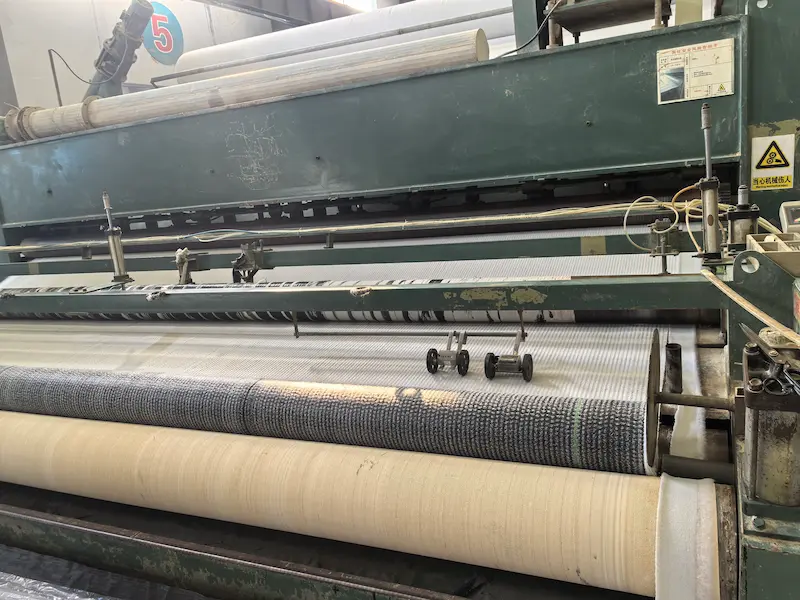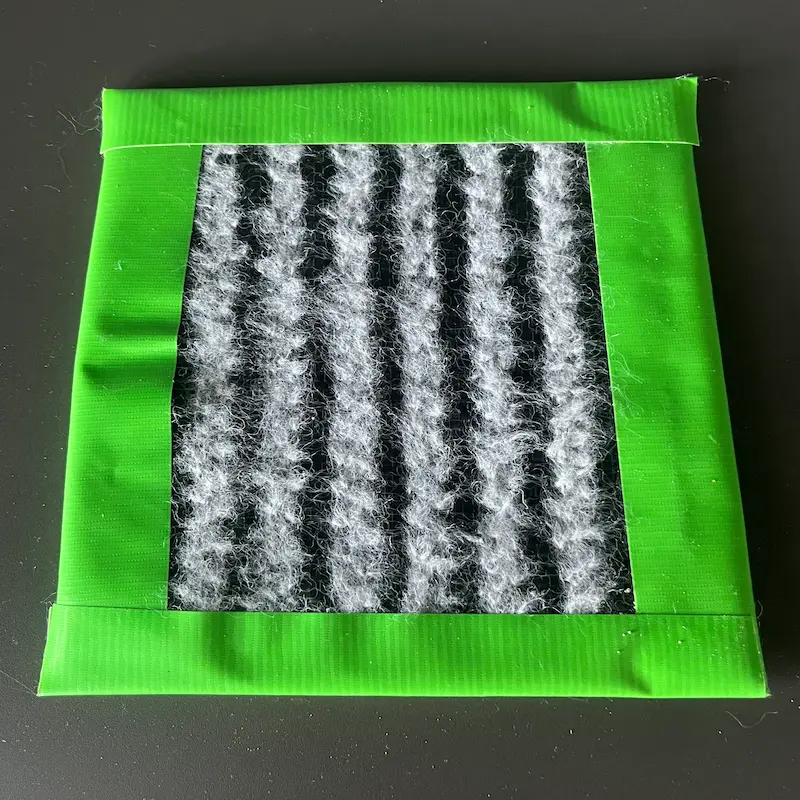What is Geosynthetic Clay Liner (GCL)?
Geosynthetic Clay Liner (GCL) is a composite material consisting of a layer of bentonite clay sandwiched between two geotextiles. The bentonite clay, when hydrated, forms a low-permeability barrier that is effective in preventing the passage of liquids and gases. GCLs are commonly used in landfill liners, mining applications, and other civil engineering projects where a robust and reliable waterproofing solution is required.
Geosynthetic Clay Liner (GCL) resources
•America
•Canada, Mexico, Peru, Argentina
•Japan, Korea, Eastern China, Philippines
•Spain, Italy, Greece, Turkey, Central Asia, Xinjiang, Gansu, China
•Calcium bentonite is widely distributed in the world, while sodium bentonite is rare, and the production area is concentrated in a few countries and regions
Classifications of Geosynthetic Clay Liner (GCL)
Geosynthetic Clay Liner (GCL) can be divided into two types: Sodium bentonite waterproof blanket and Calcium bentonite waterproof blanket.
Bentonite waterproof blanket can be divided into three kinds according to the production process: Needled sodium bentonite waterproof blanket (GCL-NP), Needle-coated sodium bentonite waterproof blanket (GCL-OF) and dhesive process sodium bentonite waterproof blanket (GCL-AH).

The main identification characteristic
Water absorption and expansion: with hygroscopicity, it can absorb 8-15 times its own volume of water. After the expansion of water, the expansion ratio is more than 20-30 times of its original volume.
Dispersion suspension: Montmorillonite exists in solution as a colloidal dispersion (fine particles, with the same negative charge)
Adhesion: The colloidal suspension of bentonite has a high viscosity. (Friction between particles, molecules)
Thixotropy: The colloidal solution becomes thin when stirred and thickens after rest.
Ion exchangeability: The most common exchangeable cations are calcium and sodium ions.
Non-toxic: non-toxic to humans, animals and plants.
Specifications of Geosynthetic Clay Liner (GCL)
Dimensions | •Width: Common widths include 3 meters, 4 meters, and 6 meters. •Length: Typically available in rolls of 50 meters or 100 meters. |
Thickness | The total thickness of a GCL is generally between 4mm and 10mm. The bentonite layer itself is usually between 2mm and 5 mm thick. |
Mass per Unit Area (or weight per square meter) | typically ranges from 4 kg/m² to 8 kg/m². |
Tensile Strength | Tensile strength usually ranges from 5 kN/m to 20 kN/m, depending on the materials and manufacturing process used. |
Permeability | The permeability coefficient is generally less than or equal to (1 imes 10^{-9} , ext{cm/s}), which is a key indicator of its waterproofing performance. |
Geosynthetic Clay Liner (GCL) Price
Geosynthetic Clay Liner (GCL) prices vary depending on a number of factors, including specifications, quality, supplier and region.
The price of Bentonite GCLs can vary significantly depending on the specific product and supplier. Generally, prices range from $0.50 to $2.00 per square foot (or approximately $5.38 to $21.53 per square meter). For large-scale projects or bulk purchases, discounts may be available, reducing the cost per unit area.
Factors Affecting Price:
1. Dimensions and Thickness: larger dimensions and thicker products typically command higher prices.
2. Quality and Type of Bentonite: high-quality sodium bentonite, which provides better swelling and sealing properties, is generally more expensive than calcium bentonite.
3. Manufacturer and Brand: well-known brands and reputable manufacturers often charge a premium for their products due to their reliability and quality assurance.
4. Geographical Location: prices can vary by region due to differences in local market conditions, transportation costs, and import duties.
5. Volume of Purchase: bulk orders usually benefit from lower per-unit prices compared to smaller, individual purchases.
6. Additional Features: some GCLs come with additional features such as protective geotextiles, which can increase the overall cost.
Example Pricing:
•A 4 mm thick GCL, 6 meters wide, and 100 meters long might cost around $1.00 to $1.50 per square foot (approximately $10.76 to $16.14 per square meter).
•A 6 mm thick GCL with enhanced performance features might cost between $1.50 to $2.00 per square foot (approximately $16.14 to $21.53 per square meter).
GCL testing related product standards
•GRI GCL3-2010 Standard Specification for “Test Methods, Required Properties, and Testing Frequencies of Geosynthetic Clay Liners (GCLs)”
•ASTM D5889-11 Standard Practice for Quality Control of Geosynthetic Clay Liners
•ASTM D6495-09 Standard Guide for Acceptance Testing Requirements for Geosynthetic Clay Liners
•ASTM D 5887-08 Standard Test Method for Measurement of Index Flux Through Saturated Geosynthetic Clay Liner Specimens Using a Flexible Wall Permeameter
•ASTM D 5890-06 Standard Test Method for Swell Index of Clay Mineral Component of Geosynthetic Clay Liners
•ASTM D5891-02(2009) Standard Test Method for Fluid Loss of Clay Component of
Geosynthetic Clay Liners
•ASTM D5993-2014 Standard Test Method for Measuring Mass Per Unit of Geosynthetic Clay Liners
•ASTM D6243-09 Standard Test Method for Determining the Internal and Interface Shear Resistance of Geosynthetic Clay Liner by the Direct Shear Method
•ASTM D6496 - 04a(2009) Standard Test Method for Determining Average Bonding Peel Strength Between the Top and Bottom Layers of Needle-Punched Geosynthetic Clay Liners
•ASTM D6768 - 04(2009) Standard Test Method for Tensile Strength of Geosynthetic Clay Liners
•ASTM D 6141-09 Standard Guide for Screening Clay Portion of Geosynthetic Clay
Liner(GCL) for Chemical Compatibility to Liquids
•GRI GCL4-2006 Standard Guide for “Gripping of Reinforced GCLs to End Platens During Direct (Interface) Shear Testing”
Applications of Geosynthetic Clay Liners (GCL)
1. Landfill Liners and Caps:
•Description: GCLs are extensively used in the construction of landfill liners and caps to prevent the leakage of leachate into the surrounding soil and groundwater.
•Benefits: They provide a highly effective barrier against the migration of contaminants, ensuring environmental protection.
2. Waste Containment:
•Description: In hazardous waste containment facilities, GCLs are used to create impermeable barriers that prevent the spread of toxic substances.
•Benefits: The high swelling capacity of bentonite ensures that even small cracks or punctures are self-sealing, maintaining the integrity of the containment system.
3. Reservoirs and Ponds:
•Description: GCLs are used in the construction of reservoirs, ponds, and other water storage structures to prevent seepage and ensure water retention.
•Benefits: They offer a cost-effective solution compared to traditional clay liners and can be easily installed in challenging terrains.
4. Canal and Ditch Liners:
•Description: GCLs are used to line canals and ditches to prevent water loss and maintain the structural integrity of the channels.
•Benefits: They help in reducing water seepage, thereby improving the efficiency of irrigation systems and water management.
5. Tunneling and Mining:
•Description: In tunneling and mining operations, GCLs are used to seal off areas and prevent water ingress.
•Benefits: They provide a reliable and durable solution for waterproofing in underground environments, enhancing safety and operational efficiency.
6. Roofing and Building Envelopes:
•Description: GCL can be used in roofing systems and building envelopes to provide additional waterproofing and moisture control.
•Benefits: They add an extra layer of protection against water damage, improving the longevity and durability of the structure.
7. Industrial and Agricultural Applications:
•Description: In industrial settings, GCLs are used to contain process liquids and in agricultural applications to manage water resources efficiently.
•Benefits: They help in maintaining the quality of stored liquids and optimizing water use, contributing to sustainable practices.
8. Environmental Remediation:
•Description: GCLs are employed in environmental remediation projects to contain contaminated soils and groundwater.
•Benefits: They play a crucial role in isolating conta[AILoading]
Conclusion
Geosynthetic Clay Liners (GCL) is made of high expansibility sodium bentonite filled between special composite geotextile, it not only has all the characteristics of geomaterials, but also has excellent waterproof (permeable) performance. It will not cause secondary pollution to the environment and is a new type of environmental protection product. Any place that needs to use dark drainage can be used, cost-effective. GCL has a very wide range of application and can be used in water conservancy and environmental protection. The characteristics of bentonite waterproof blanket also include harmless and non-toxic to the human body, little impact on the environment, and good environmental performance.

897.webp)
942.webp)
237.webp)